Korean Spicy Pork – Jeyuk Bokkeum (10 MINUTES Prep!)
This post may contain affiliate links. Please read my disclosure policy for details.
Do you love pork? Do you love spicy food? This is for you, some juicy pork marinated in an incredible sweet and savory spicy sauce. Prepared in less than 30 minutes!
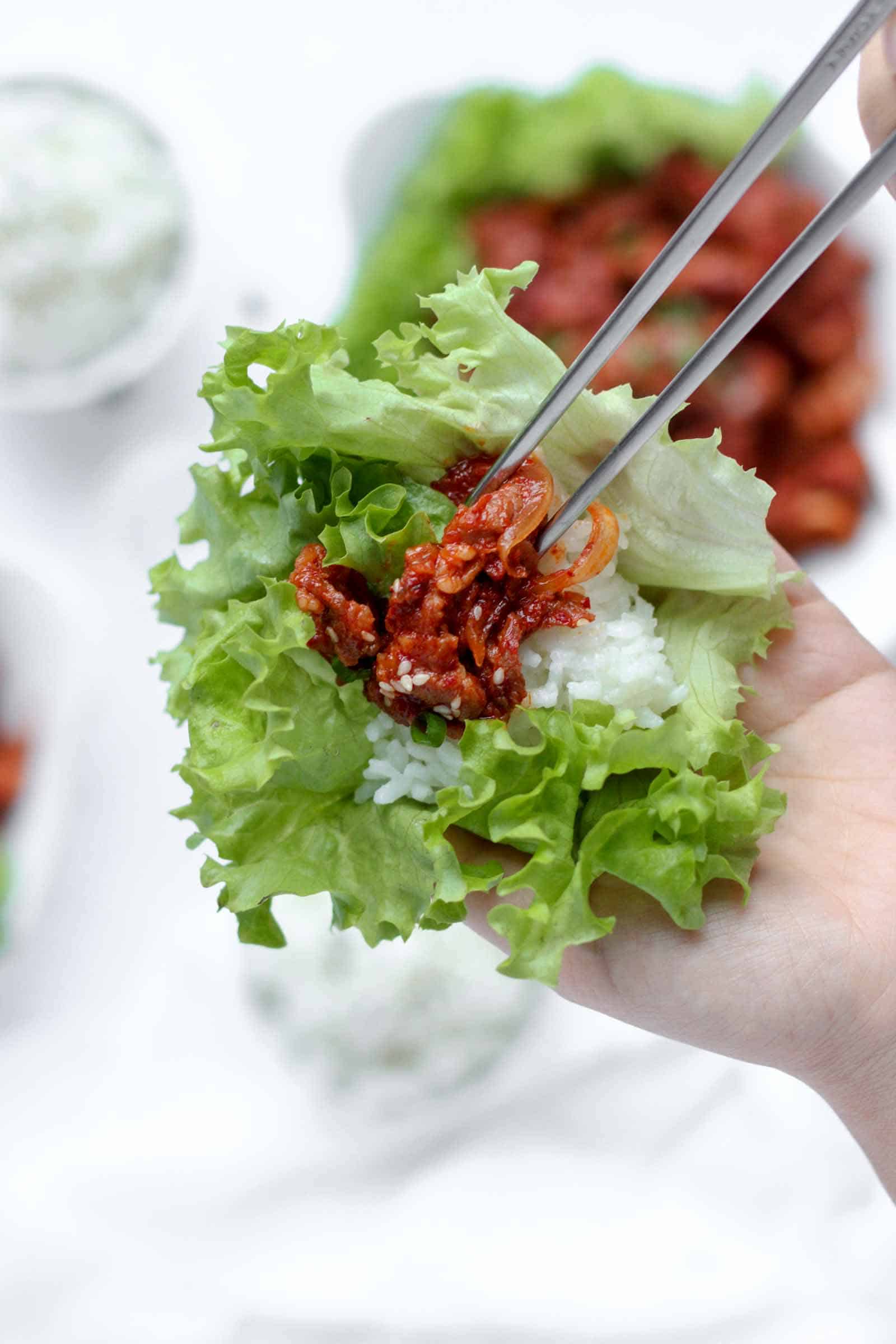
What is Jeyuk Bokkeum?
Korean spicy pork is called jeyuk bokkeum (pork stir-fry) or dwaeji bulgogi (pork bulgogi). It consists of some pork marinated in a sweet and spicy sauce then stir-fried, or even barbecued. The meat used must be quite fatty therefore either use pork belly, pork butt or pork shoulder. Other parts of the pork will be too dry for this dish.
The spicy marinade is made with gochugaru (Korean pepper flakes) and contains a lot of sweeteners such as sugar and jam to bring a sweet touch to the spicy sauce. Spicy pork is prepped in barely 10 minutes and then marinated for a minimum of half an hour. This is definitely my favorite Korean dish of all time. I’m an unconditional pork lover and spicy food lover so this really brings my taste buds to heaven. Plus it is so quick to prepare, perfect for getting an incredible dinner ready on the table with a few efforts.
You can serve it with rice and lettuce or perilla leaves to wrap around the meat. You can also use it to fill baos, tortillas or even tacos such as in my Korean Spicy Pork Soft Tacos.
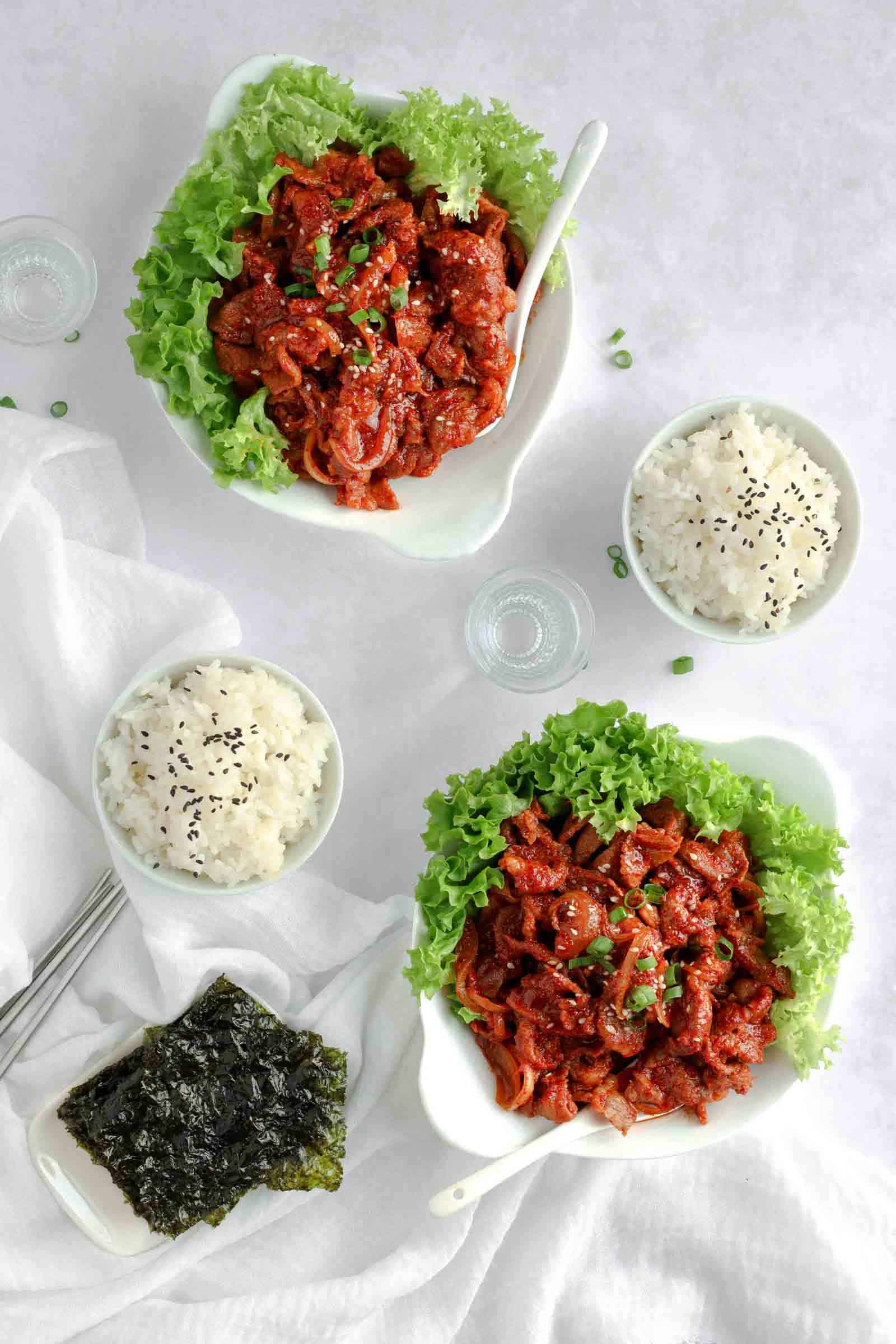
How to prepare Korean Spicy Pork?
- Mix all marinade ingredients together.

- Chop the pork into smaller pieces.
- Add pork, onion and green onions to the marinade. Massage it well for the marinade to cover the pork evenly.

- Let it sit for at least 30 minutes.
- Cook the pork on medium-high heat for 7-8min or until the pork is fully cooked.


- Sprinkle some sesame oil and sesame seeds.
- Serve with lettuce.
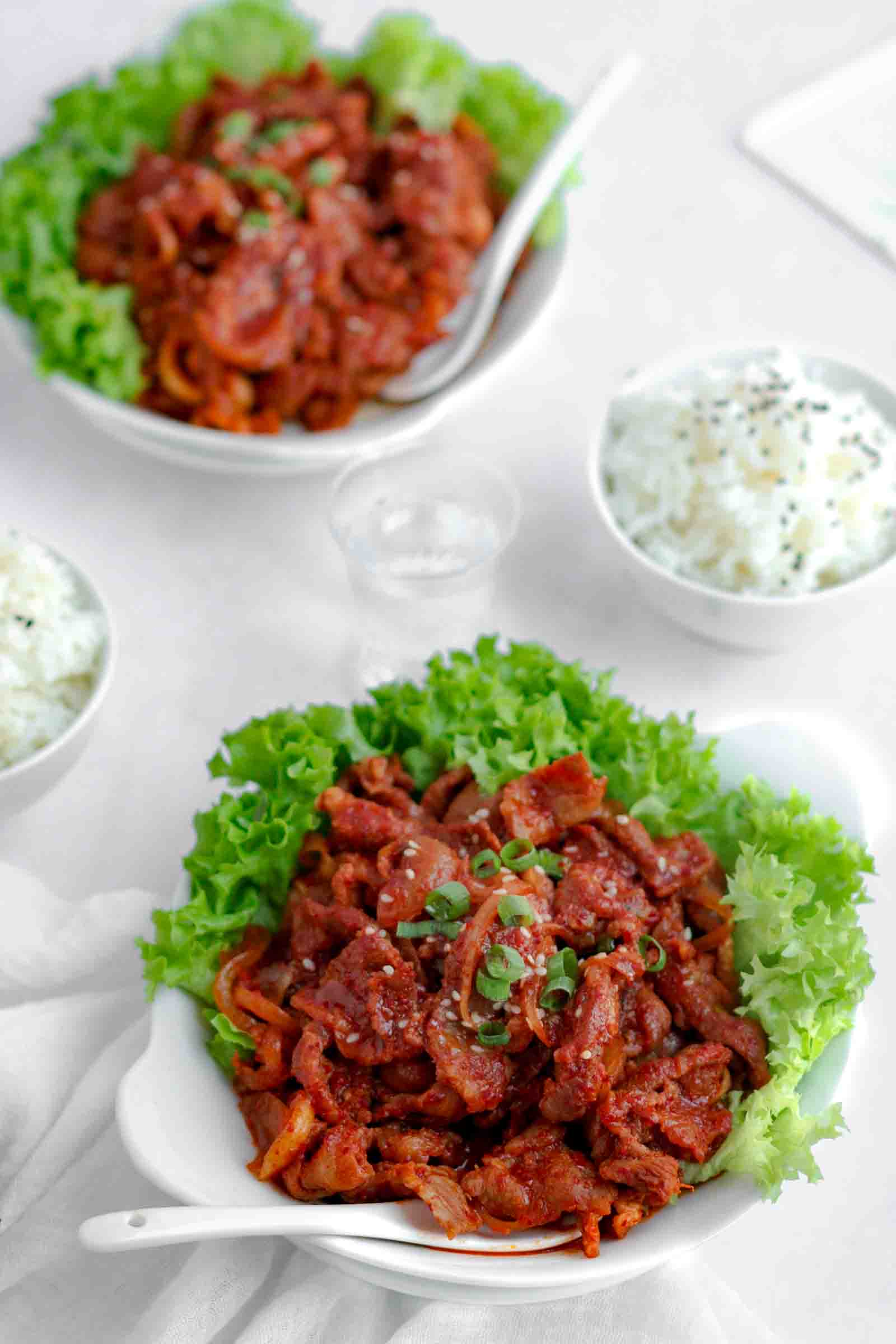
More spicy Korean recipes?
- Korean Spicy Pork Soft Tacos
- Cheese Dakgalbi – Korean Spicy Chicken Stir-Fry
- Napa Cabbage Kimchi
- Spicy Korean Fried Chicken
- Dakdoritang (Dakbokkeumtang) – Korean Spicy Chicken Stew
RECIPES IN YOUR INBOX? Don’t forget to subscribe to my newsletter to receive the latest recipe updates delivered for free directly to your inbox! Oh, and you will also find me on Youtube, Instagram, Facebook and TikTok. Come say hi and leave me a message, it is always a pleasure to connect with all of you!
Thanks so much for stopping by! xx

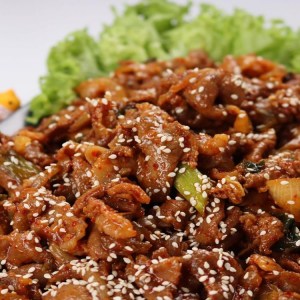
Korean Spicy Pork (Jeyuk Bokkeum)
Ingredients
- 500 g pork butt | pork shoulder or pork belly (Note 2)
- 1 onion, sliced
- 5 green onions, chopped
- sesame oil
- sesame seeds
marinade:
- 5 cloves garlic, minced
- 2.5 tbsp gochugaru (Note 1) | Korean red pepper flakes
- 3 tbsp soy sauce
- 1 tbsp fish sauce
- 2 tbsp mirin
- 2 tbsp green plum jam
- 2 tbsp sugar
- a pinch of black pepper
Instructions
- Mix all marinade ingredients together.
- Chop the pork into smaller pieces.
- Add pork, onion and green onions to the marinade. Massage it well for the marinade to cover the pork evenly.
- Let it sit for at least 30 minutes.
- Cook the pork on medium-high heat for 7-8min or until the pork is fully cooked.
- Sprinkle some sesame oil and sesame seeds.
- Serve with lettuce.


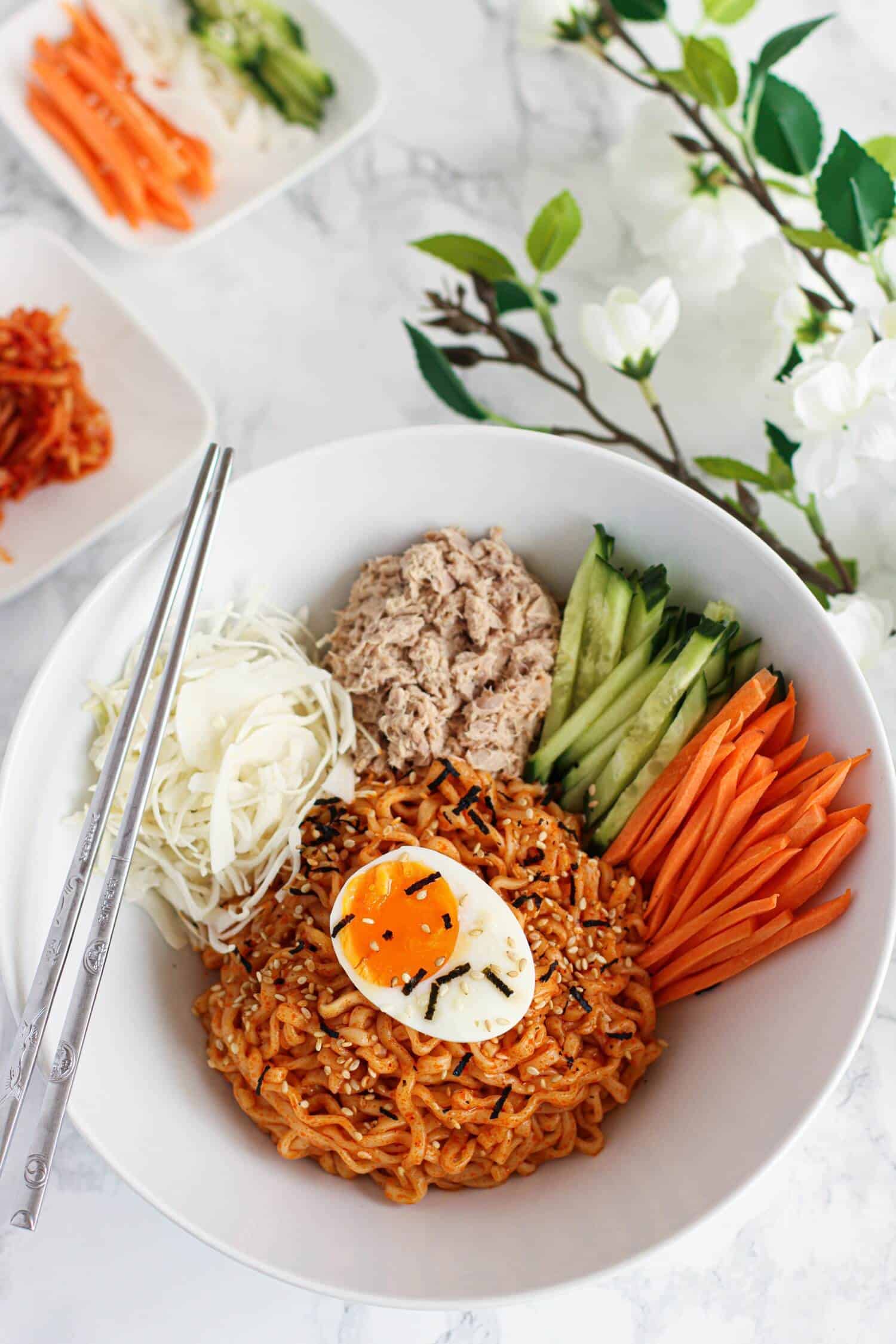
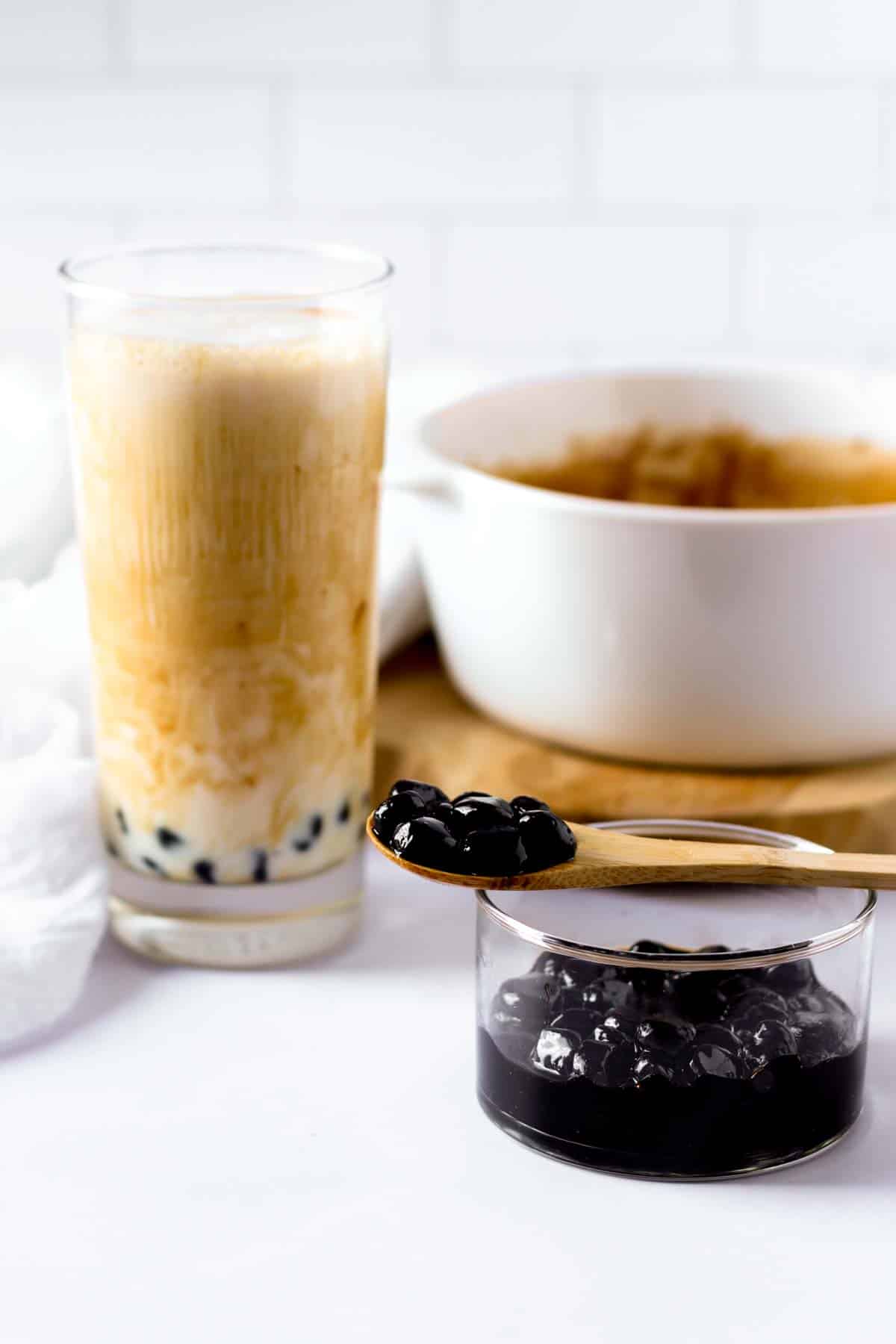


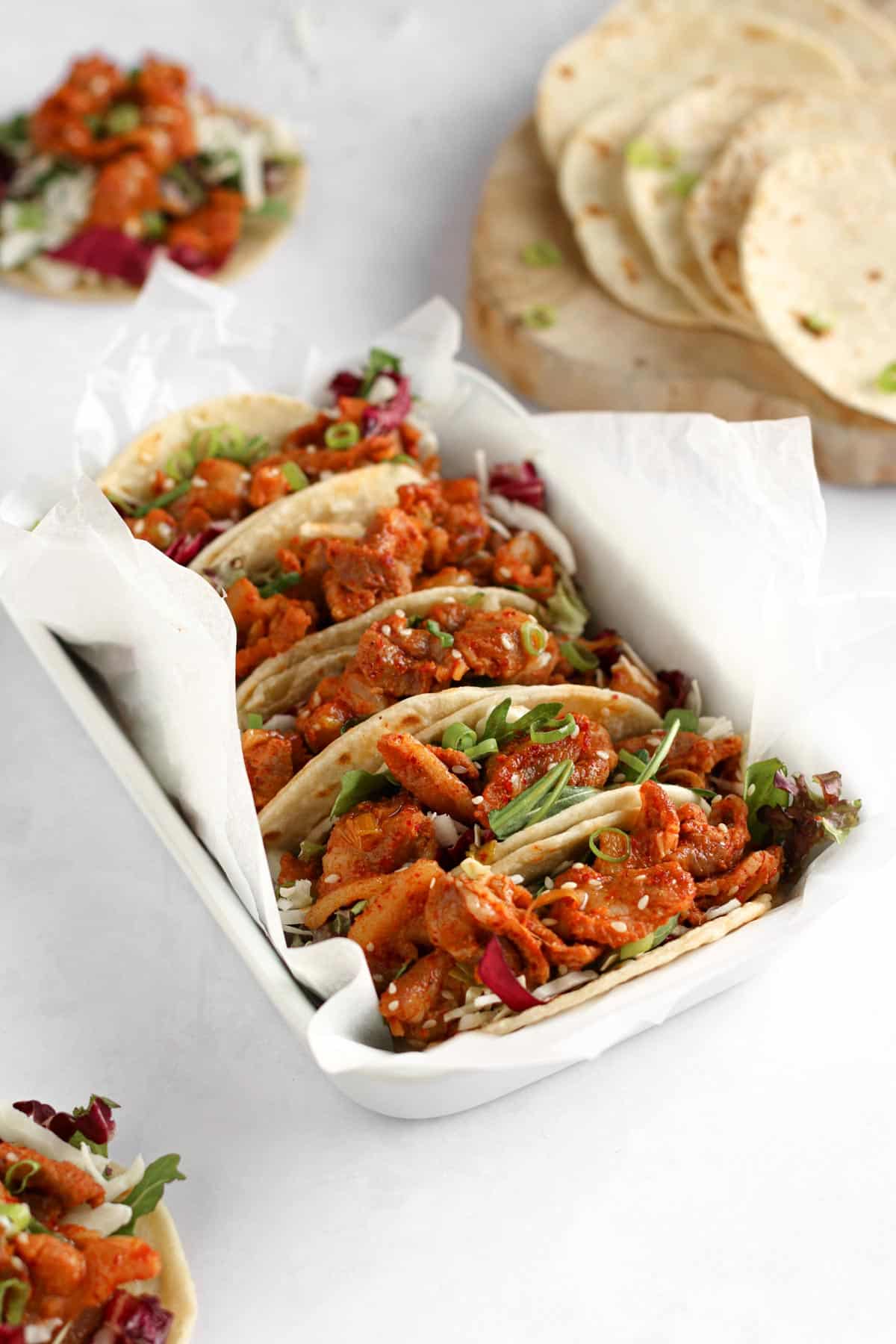
I’ve made this many times with chicken, beef, and vegetarian. It works great with noodles too. I love this recipe! I didn’t have to change anything although I’ve substituted with other kinds of jam depending on availability. It’s super easy, yummy, and versatile.
Hi Miwa, thank you for your feedback 🙂 Indeed this recipe works great with any kind of meat or vegetables. I am glad you enjoyed it!